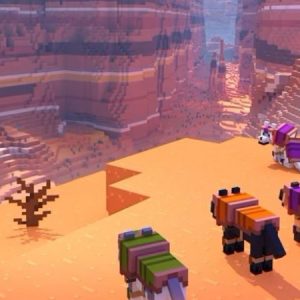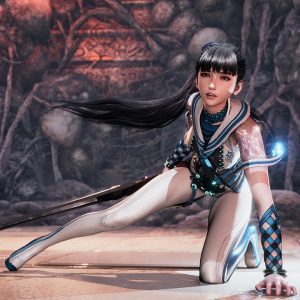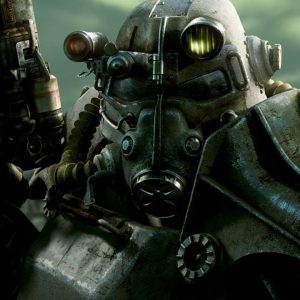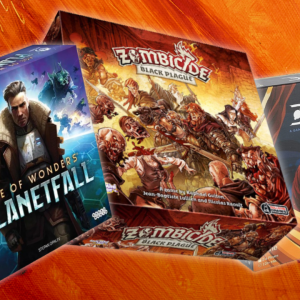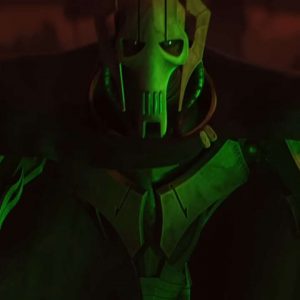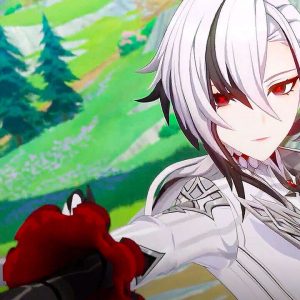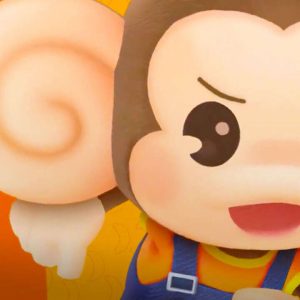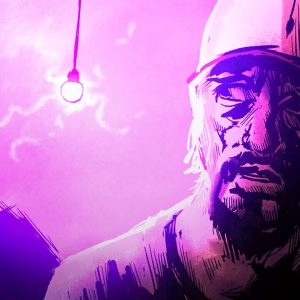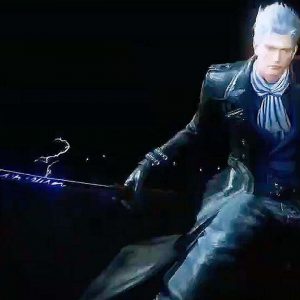Ryo and Shenhua are back at last.
“Can you open drawers and closets like in the old games?” I asked Yu Suzuki, the man behind the Shenmue series.
“Of course” he said. “It’s Shenmue, after all.”
That was the moment I realized that Shenmue III was going to be all I could have hoped for.
“Every time I hold the controller to play the game, it feels like a dream come true,” Shenmue III co-producer Cedric Biscay told me. Biscay was originally a fan of the Shenmue series himself, but as the CEO of Shibuya Productions, he was instrumental in helping Yu Suzuki’s YsNet fund development of the game, long before the crowdfunding campaign had made Suzuki over $7 million.
Of course, Biscay wants to promote his game, so his comments should be taken with a grain of salt. But when I finally got to see the game, I knew exactly what he meant. With the third installment coming 18 years after the last iteration, Shenmue still isn’t for everyone. But for the fans, it indeed looks to be “a dream come true”.
In the years since Shenmue II’s 2001 release, video games have evolved, especially in the open-world genre that Shenmue helped conceive. Yet few other games allow the player to do something as detailed as pull a random comb out of a drawer. And Ryo Hazuki, Shenmue’s protagonist, often even has something to say about these minor objects he investigates, in voiced dialogue too. Modern adventure games like Heavy Rain and Life is Strange or walking simulators such as Gone Home have achieved similar depth in their exploration, but Shenmue does it within a full-fledged open-world environment. Most gamers might prefer to web-swing through a bustling city or shoot wave after wave of soldiers, but if opening a fridge or investigating a tangerine while going after a mysterious man who killed your father sounds more appealing to you, Shenmue III should definitely be on your radar.
The original Shenmue and Shenmue II had hundreds of unique NPCs wandering through their locations, and if Ryo approached them, each one of them reacted with fully voiced dialogue. From a pizza restaurant to the local dentist, Ryo could enter every single shop or facility in those games, with store shelves fully explorable and quirky shop owners who had something unique to say each time you came by. Suzuki wants that same detailed and rich explorable environment in Shenmue III, but how do you do that with only a fraction of the budget that went into these original games?
After sitting down with Suzuki, and watching approximately 20 minutes of gameplay footage, it was clear to me that this had by no means been an easy task. Suzuki seems to have pulled it off anyway, but only because he wasn’t afraid to make sacrifices.
Shenmue III’s environments and game systems don’t seem to be as deep and sophisticated as they were in the original games. The game is still fully voiced and Ryo has many characters to talk to, but he can no longer interact with every single NPC he encounters in Bailu and Niaowu, the two countryside Chinese villages his adventure will start with in Shenmue III. The battle system and part-time jobs don’t feel as fleshed out as before, and most of the game’s music is reused from the original games, be it with many pieces that were never used in the originals. Graphically, the game is obviously not an AAA title either.
But all this shows how Suzuki has taken a realistic approach towards the development of Shenmue III, carefully analyzing what his team is capable of. It seems to have resulted in what does not feel like a dumbed-down version of Shenmue, but a game that focuses on its true essence.
Freedom and Everyday Life
Suzuki tells me that he sees player freedom and everyday life as the two most important features of Shenmue, and everything he showed and explained to me about the game could be connected back to those two main themes.
“I haven’t done proper research, so maybe I shouldn’t say this, but Shenmue III might just have more voiced dialogue than any other game to date,” he said. “When we brought the script to the translation agency, they were astonished by its volume.”
Anyone who has played the original games knows the incredible amount of dialogue they contained, but Suzuki believes there’s even more of it this time. That makes the fact that Ryo will no longer be able to talk to every character feel like a positive thing rather than something to worry about. By giving up on the ability to interact with characters who won’t do much more than show you the way to your next destination anyhow, Shenmue III should be able to add additional depth to the characters who really matter.
“The game’s world has increased a lot in size,” Suzuki told me. “Bailu and Niaowu are now approximately the same size as Shenmue II’s Hong Kong. We originally planned to have about 50 inhabitants for these towns, but now Shenmue III has a total of about four or five hundred NPCs.”
Shenmue III is a fully explorable environment, from shops to drawers to characters who speak to you in fully voiced dialogue. With these essential features intact, the third installment will undoubtedly feel like a continuation of the Shenmue experience.

The ability to zoom in on any object and see the world through Ryo’s eyes makes exploration a lot more engaging. Just like in the originals, the player can switch to a first-person viewpoint at any time, and in Shenmue III you can also walk around while holding the zoom button. By clicking the left analog stick, you can also adjust the camera distance from Ryo, in a similar vein to Red Dead Redemption 2’s camera options. For the first time in the series, the camera can also be moved 360 degrees with the right analog stick, so you won’t just be looking at Ryo’s back.
The realistic flow of time and weather effects are two other aspects iconic to Shenmue that are back. One in-game day passes in approximately one hour, and Ryo needs to sleep during the night. When he wakes up, the in-game calendar changes to the next day. This may all sound obvious, but even though having time pass in open-world games is pretty much commonplace nowadays, few games implement calendars and realistic sleeping routines for their characters.
Shenmue was also one of the first games to implement real-time weather effects. In Shenmue III, this is implemented and modernized. As co-producer Cedric Biscay mentions, aesthetic features like this are easy to enhance thanks to modern development tools.
“If it has rained in the morning, there’s a chance you can still see puddles in the evening,” Suzuki explained. “Footsteps become easier to spot on mountain paths as well.”

A completely new feature to the series is the ability to change Ryo’s wardrobe. By going into the menu, the player is free to choose the shoes, jeans and upper wear for Ryo at any time. Clothes can be bought at shops, and thus the player will gain more options to coordinate Ryo as they progress.
Shenhua and Ren, two other main characters who join Ryo on his adventure, won’t have these same options, but Suzuki said he is looking into the possibility of adding additional costumes for them post-launch as DLC.
Shenhua, the heroine of the Shenmue series, no longer looks like the tomboy country girl she was in Shenmue II, but this change of character design was intentional.
“Creating a more feminine design made it easier for us to create an appealing character,” said Suzuki.
But while her looks might have changed, Shenhua’s personality and the way she interacts with Ryo have remained true to Suzuki’s original vision.
As you can see in the latest trailer, released at the Monaco Anime Game International Conferences, Shenmue III definitely does not have the graphics of a modern AAA title. Given the fact that it started as a Kickstarter project, this is no big surprise. But for older gamers who remember Shenmue as the most expensive and best looking game of its time, this can be easy to forget.
Still, Shenmue III is by no means an ugly looking game. The characters and their animations might not live up to modern standards, but the game features beautiful environments of rural China. It should also be noted that many characters we saw in the trailer are probably not main characters. Even in today’s biggest blockbuster games, there is a difference in detail between main characters and random NPCs. What makes Shenmue a special case is that pretty much any character has enough personality and importance to the story to be included in a trailer. They might not be the best looking characters, but I hope to fall in love with their unique personalities like I did with the old ex-military martial artist Yamagishi-san and quirky harbor laborer Delin in the previous games.
Main characters like Ryo, Shenhua and villain Lan Di look a lot better than other characters. From Shenhua’s skin to the texture of Ryo’s leather jacket, the detail in these character models shows significant improvement. In older trailers and screenshots, many fans complained that the main character did not look like the Ryo they knew, and while that still can be said to some degree about the new trailer, Ryo looked better in the gameplay footage I saw.

Bringing it All Together
In addition to player freedom and everyday life, Suzuki mentions a third feature he sees as essential to the Shenmue experience: connectivity.
“We achieved a lot in the original games, but one of the things I want to do better this time is linking different features together,” he said.
In Shenmue III, Ryo can chop wood as a part-time job. With his hard-earned money, he can then play mini-games that give him move scrolls to use in battle. By making even more money, he will become able to rent a fishing rod, which allows him to go fishing and sell his catches at the local fish market. Of course, this will probably also allow him to get closer to the fishermen of the village, hence connecting the game systems to the story as well.
Gambling parlors make a return too, but while those existed for the pure sake of making quick money in previous entries, Ryo can now obtain important items by engaging in them.
Iconic gambling mini-games like Lucky Hit are back, but new mini-games such as throwing stones in a bucket are featured as well. When Suzuki went location scouting for Virtua Fighter and Shenmue in China during the 1990s, he saw people playing this game in Mengcun. Yes, even the mini-games are a realistic depiction of Chinese culture. But then again, Shenmue III also has quirky turtle and frog races. The player chooses a turtle or frog to bet on, and can cheer for it by mashing the button that appears on screen.
“I also wanted to implement a snail race, but sadly we weren’t able to do that this time,” Suzuki said with a straight face.

I didn’t understand what could be so special about a snail race. Why would anyone want to watch races featuring a creature even slower than a turtle?
“Snails are very slow, you know” said Suzuki. “I thought it would be interesting to combine this with Shenmue’s flow of time. Ryo would have to place his bets in the morning, but has to come back later in the afternoon to check the results.”
While this did not make it into the final game, it shows that Suzuki still thinks in a different way than any other developer. Co-producer Biscay sees Suzuki as Shenmue III’s strongest weapon, and learning about snail races indeed made me rediscover Suzuki’s uniqueness.
Capsule toy machines make a return as well. While the toys were collectibles and had no real function in the original games, they are now linked to the other systems as well. Just like in Shenmue II, Ryo can take toys to pawn shops, but rather than receiving money in return, he can trade them for important items. Selling capsule toys was never an efficient way to make money, which made the many pawn shops with different rates scattered through Shenmue II’s Hong Kong feel like a wasted opportunity. But if I can trade my precious toys for items that cannot be found elsewhere, I know I’ll become a regular customer. By the way, seeing Ryo bend down and turn the machine’s lever in full animation will make fans of the originals feel nostalgic for sure.
Wood-chopping, fishing, gambling mini-games, collecting capsule toys – it’s all there. But Suzuki agrees that these systems aren’t anything special on their own.
“There are much better fishing games even on smartphones,” he acknowledged.
But Shenmue’s gameplay has always had its quirks. Driving a forklift to the same warehouse at Yokosuka’s harbor over and over quickly became mindless repetition, and airing books at the Man Mo temple has always been a tedious chore. A regular game developer would never force such mundane tasks upon the player. But Suzuki had the courage to makes us feel like real laborers at the harbor, and when Ryo received the task to calm his mind by helping at the temple, we had to do that too. The fact that Shenmue dares to be tedious on purpose makes it a role-playing experience like no other. Seeing Ryo chop wood chunks while sweating in the village of Bailu in Shenmue III assures me that this unique immersion is still there.
The same can be said for the new battle system. As you can see in the trailer, Ryo will be able to train at dojos by hitting wooden dummies and performing the kung fu ‘horse stance’. What I saw of the gameplay seemed pretty straightforward and might quickly feel repetitive, but then again, martial-arts training is all about repetition. I can’t wait to see how these training mini-games will depict Ryo’s journey as a martial artist.
At dojos, Ryo can also engage in sparring sessions with other students, and increase his stamina and power by doing so. By challenging students to a fight, he can increase his rank at the dojo. If Ryo defeats a student of the 1st Dan, Ryo will receive that same rank, and if he goes on to beat a 2nd Dan fighter, he will reach 2nd Dan, and so on. Suzuki told me that at the entrance of the dojo, you will be able to see a board with all the names of the students together with their ranks. Ryo’s name won’t be on there at first, but as you challenge students in fights you will see his name pop up at a higher rank each time, creating a sense of community and Ryo existing within it.
After a fight, Ryo needs to rest if he wants to stand a chance in the next one. Fighting consumes stamina, and he needs to eat in order to restore his HP. It’a shame that Ryo’s eating is not animated, as food is consumed from your inventory in a similar vein as in the Yakuza games, rather than an evolution of how he would consume soft drinks from a vending machine in previous games. That being said, eating also functions as a link between systems, since Ryo won’t be able to run for a while if you don’t feed him for too long, and it will also create a real reason to visit all the eateries and street-food stands we can expect to find in Bailu and Niaowu.
“Regarding the battle system, training your moves has become much more important, as it greatly increases their power,” said Suzuki. “For example, in a ring with fences, you will be able to punch your opponent out of the ring if your move has reached a certain level.”
While Shenmue’s battle system is still a real-time fighting game at its core, RPG elements seem to be much more important than in previous entries. Furthermore, by making it possible to execute moves without having to memorize the commands, Suzuki also makes the battle system accessible to new players.
“In the case of a PlayStation controller, you cycle between five moves that are automatically set up with the R1 trigger, and by pressing R2 your move of choice will be executed,” he explained. “Of course, seasoned players can execute those same moves with the actual commands like in a real fighting game.”
For the first time in the series, Shenmue III even offers a choice of four difficulty modes. The easiest one is there for those who just want to focus on the story, but Suzuki says he doesn’t advise even core fans to start with the hardest mode, the Japanese name of which can be translated as “Don’t even try!” Suzuki told me that the battles and other aspects of the game are affected by the chosen difficulty, but he did not go into detail.
“We are not using assets from previous entries or the Virtua Fighter series, so all the fighting animations have been created from scratch,” he said. “That was a lot of work, so we had to give up on implementing throw moves this time.”
Judging from this information, Shenmue III’s battle system might not be as deep as the originals. But with training implemented as a full-fledged system, it might be able depict Ryo’s growth as a martial artist in an even more convincing way.
A Reunion Like No Other
When it comes to player freedom, pretty much any open-world game in 2019 has much more of it than Shenmue. But I have yet to find a game that simulates everyday life in such a convincing way.
What has had many of the fans worried is that supernatural elements might change that sense of reality in Shenmue III. The ending of Shenmue II contained supernatural events, and similar elements can be seen in a pre-release promotional video of the original Shenmue. In a trailer for the unreleased Shenmue Online, Ryo even unleashes what looks like a Hadouken. I had to ask Suzuki about this, but he gave me a much simpler answer than I had expected.
“There are no supernatural elements in Shenmue III.”
I felt an enormous relief. Something I had been worried about for 18 years had finally been resolved. The supernatural elements at the end of Shenmue II were an exception, and Suzuki told me he has no intention to make them the new norm. Shenmue III will still be that life simulator experience the fans have come to love.
For me, the most important thing of all is that I’ll finally be able to continue my conversation with Shenhua. In Shenmue II, I walked a mountain path with her for hours, and we had deep conversations. I was only 15, and it was the first time I fell in love with someone.
“To me, Shenmue is all about depth and poetry, something we find less and less in current large productions,” co-producer Biscay observed.
Because it took so long for Shenmue III to finally be made, the reunion with Shenhua will likely feel even more poetic than it originally would have. And strangely, the fact that she now almost looks like a different person adds a sadness to it all that I somehow find appealing.
“I have included an affinity system for Shenmue III,” Suzuki told me. “By communicating with Shenhua, subtle changes occur in the way she treats you.
“There are quite a lot of scenes and events that I am confident almost no player will see the first time,” mused Suzuki. “But don’t think too deep; just talk to her.”
Fans will finally be able to reunite with Ryo and Shenhua on when Shenmue III is released on PS4 and PC on August 27th.
Esra Krabbe is an editor at IGN Japan. You can ask him obsessive Shenmue questions on Twitter.

